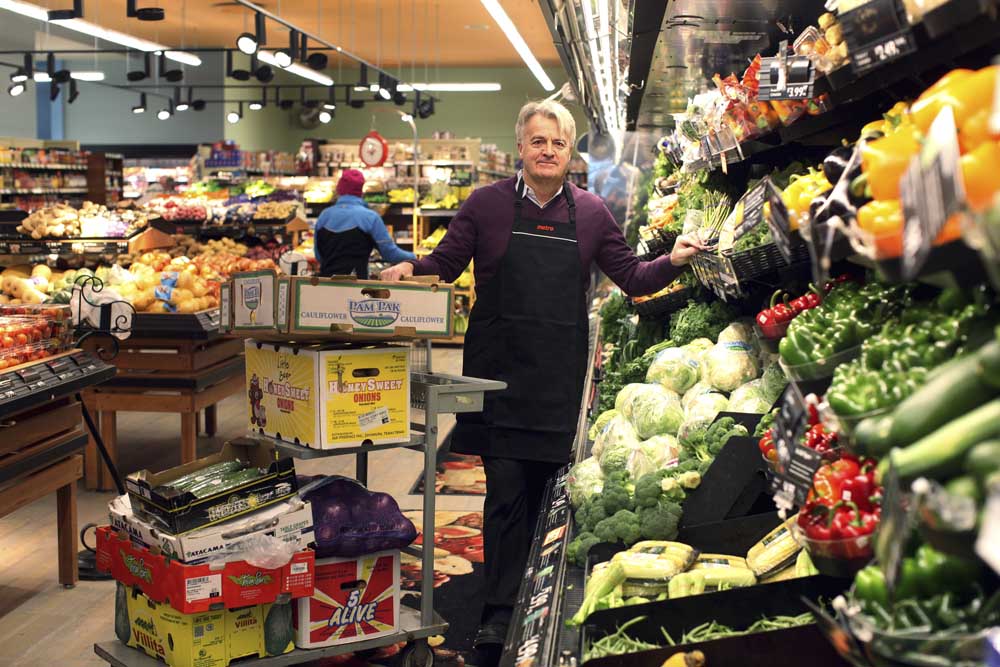In Canada, cauliflower is now a luxury good
Published 12:00 am Thursday, January 21, 2016

- Dave Chan / The New York TimesJim McKeen, owner of the McKeen Metro Glebe grocery store, stocks the produce section of his store in Ottawa, Ontario. A head of cauliflower costs 8 Canadian dollars ($5.52) as the faltering commodities sector and the surge in the American dollar combine to create a costly harvest.
OTTAWA, Ontario — Steamed, sauteed or stir-fried, cauliflower is standard fare on many dinner tables. In Canada, it is a luxury.
A head of cauliflower there now goes for around 8 Canadian dollars ($5.52), a tripling in price, the strange foodie fallout from the low price of oil and other commodities.
The recipe for high-priced cauliflower starts with the currency.
As prices for commodities have dropped, the value of the Canadian dollar has fallen, a direct link to an economy that is dependent on oil and other resources. It makes imports, like fresh U.S. vegetables during the dark Canadian winter, look especially costly.
Two years ago, one Canadian dollar was worth 93 U.S. cents. On Wednesday, it stood at 69 U.S. cents.
The drought in California, where Canadians get most of their vegetables in the off-season, just compounds the sticker shock. With less bounty in the fields, farmers’ prices, in U.S. dollars, are higher than normal.
As a result, fresh vegetables feel more like a splurge for Canadian consumers.
Iceberg lettuce sells for 3 Canadian dollars, up from the typical 90 Canadian cents. One head of broccoli goes for $4, compared with $1.50 for two in the past. Last winter, a head of cauliflower was selling for 2.50 Canadian.
“We’ve gone through this cycle before with the dollar,” said Jim McKeen, owner of McKeen Metro Glebe, a grocery store in downtown Ottawa. “But there were issues on prices anyways because of supply in addition to this whole fiasco with the Canadian dollar. It’s a perfect storm.”
The economy
The Canadian dollar, in part, reflects the trouble in the country’s economy.
For years, Canada rode the global commodities boom. The rapidly growing Chinese economy — and its seemingly insatiable appetite for commodities — helped increase the price of oil, potash, nickel and the other Canadian resources.
With China’s demand now faltering, commodity prices have reversed course. Oversupply of oil has similarly devastated its price. Both factors are taking their toll on the Canadian economy. The gross domestic product increased just 0.6 percent in the third quarter of 2015, after six months of negative growth.
Since October, the decline in the Canadian dollar, already looking shaky against a surging U.S. currency, has picked up speed.
Consumer costs are creeping up in a number of areas.
The turnover in the grocery aisle, compared with, say, a clothing store, is faster, meaning changes in currency are more quickly reflected. And profit margins are thin, so grocery stores are less willing to absorb the losses.
The current collapse of the country’s dollar could have a more significant impact in supermarkets than it did in the early 2000s, according to Sylvain Charlebois, a professor at the University of Guelph in Ontario and one of the authors of an annual study of Canadian food prices.
Charlebois estimated that about 140 Canadian food processing plants have closed in recent years. Many were owned by multinationals that have replaced Canadian production with imports from their larger U.S. plants. Kellogg’s ended a century of production in London, Ontario, just over a year ago.
The result, Charlebois said, is that price increases will be seen throughout grocery stores and not just in their fresh produce aisles. Already, he said, some breakfast cereals have hit 10 Canadian dollars.
Fishermen in Prince Edward Island now send most of their oyster harvest to the United States to capitalize on the currency difference. That’s leading to shortages at Canadian fishmongers, forcing some restaurant owners to reimport from the United States.
“It’s mind-boggling that I have to buy Malpeque oysters from my American importer in Boston,” said David McMillan, the co-owner of Joe Beef and two other restaurants in Montreal, adding that the cost of the oyster from Prince Edward Island had risen to 120 Canadian dollars a box from about 90 Canadian dollars. “That’s a lot of money for not a special oyster.”






